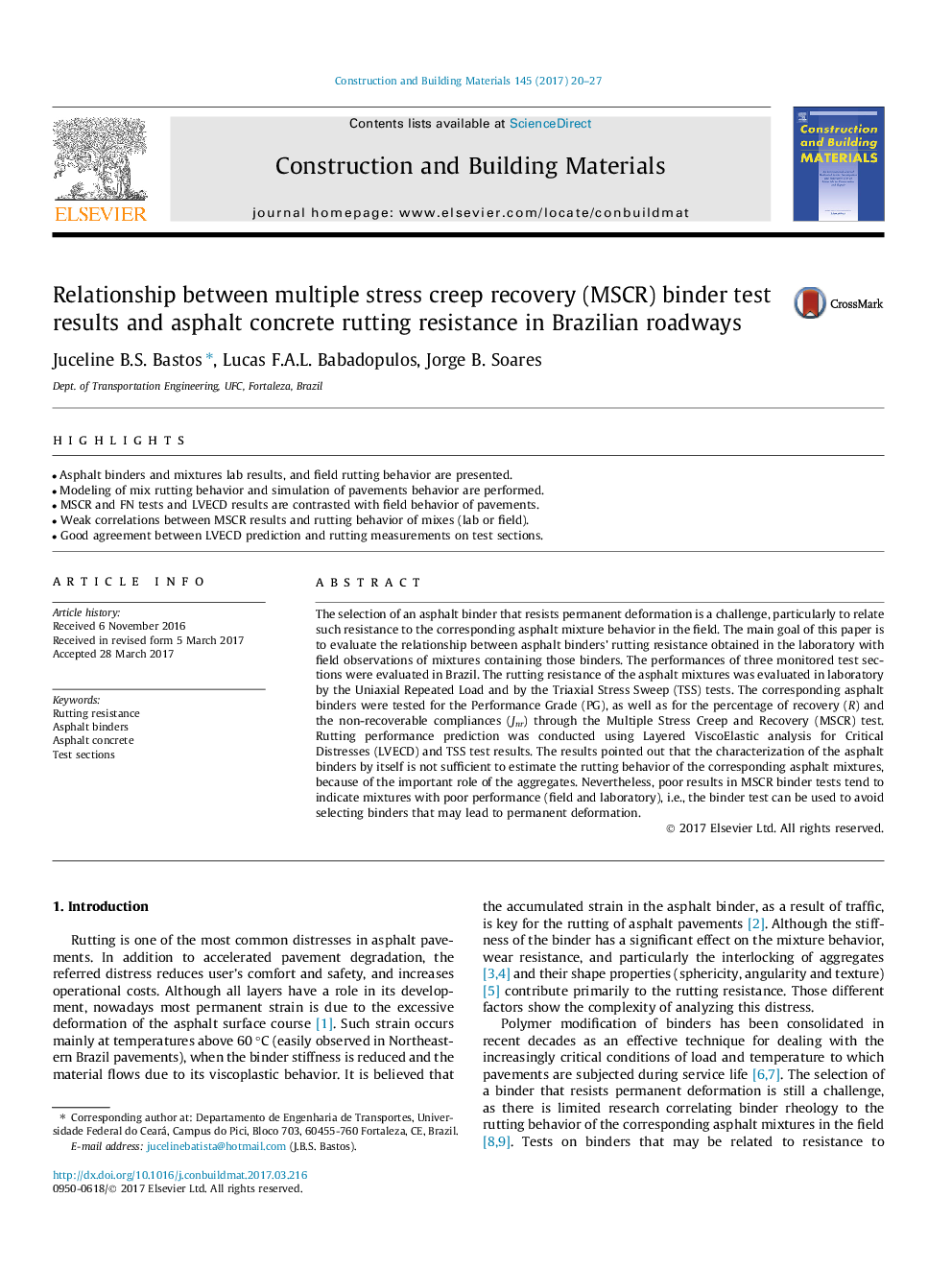| Article ID | Journal | Published Year | Pages | File Type |
|---|---|---|---|---|
| 4918361 | Construction and Building Materials | 2017 | 8 Pages |
Abstract
The selection of an asphalt binder that resists permanent deformation is a challenge, particularly to relate such resistance to the corresponding asphalt mixture behavior in the field. The main goal of this paper is to evaluate the relationship between asphalt binders' rutting resistance obtained in the laboratory with field observations of mixtures containing those binders. The performances of three monitored test sections were evaluated in Brazil. The rutting resistance of the asphalt mixtures was evaluated in laboratory by the Uniaxial Repeated Load and by the Triaxial Stress Sweep (TSS) tests. The corresponding asphalt binders were tested for the Performance Grade (PG), as well as for the percentage of recovery (R) and the non-recoverable compliances (Jnr) through the Multiple Stress Creep and Recovery (MSCR) test. Rutting performance prediction was conducted using Layered ViscoElastic analysis for Critical Distresses (LVECD) and TSS test results. The results pointed out that the characterization of the asphalt binders by itself is not sufficient to estimate the rutting behavior of the corresponding asphalt mixtures, because of the important role of the aggregates. Nevertheless, poor results in MSCR binder tests tend to indicate mixtures with poor performance (field and laboratory), i.e., the binder test can be used to avoid selecting binders that may lead to permanent deformation.
Related Topics
Physical Sciences and Engineering
Engineering
Civil and Structural Engineering
Authors
Juceline B.S. Bastos, Lucas F.A.L. Babadopulos, Jorge B. Soares,
